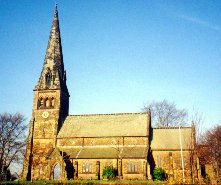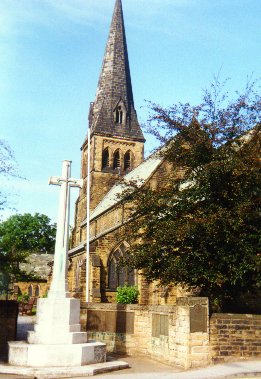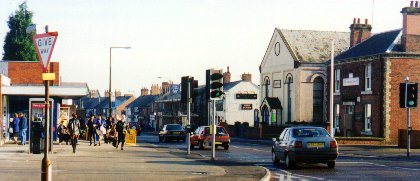
CLAY CROSS
| Clay Cross is a classic product
of the Industrial Revolution. It is situated on the A61 some 5 miles south of
Chesterfield. It grew from a small farming community into a dynamic and rumbustious
industrial town dominated by the Clay Cross Company (CXC). |
 |
| Its metamorphosis was commenced with the driving of the Clay Cross Tunnel in 1837,
and the simultaneous development of George Stephenson's collieries and coke ovens.
In 1838 Stephenson set up the 'George Stephenson Company' which was renamed the 'Clay
Cross Company' in 1851. The CXC's industrial activity (coalmining, coke ovens,
limeworks, farming, foundry and furnaces) attracted so much labour that the
population increased from 546 in 1831 to 1,478 in 1841. Many interesting facts
and photographs relating to the history of Clay Cross and CXC may be found in
The Archive Photographs Series, "CLAY CROSS AND THE CLAY CROSS COMPANY" (ISBN 0 7524 0342 7), "CLAY CROSS COMMUNITY AND COMPANY" (ISBN 0 7524 1021 0) and "CLAY CROSS THE THIRD SELECTION" (ISBN 0 7524 2080 1), compiled by Cliff Williams.
|
The Company turned the village of
Clay Cross into a dynamic industrial town. It also provided structures such as
schools, chapels, churches and houses that helped to recruit, retain and control
labour in a highly competitive market.
The foundation stone of St. Bartholomew's
Church, High Street, Clay Cross was laid on 14th August 1849 and was consecrated
on 25th January 1851. The spire was added in 1856 but the bells were not incorporated until 1874. |
 |
 |
In 1877 it was decided that a new burial ground should be provided and the churchyard of St Bartholomew's was closed for burials in 1879. The new Clay Cross cemetery on Bennett's Lane (now Cemetery Road) was officially consecrated on 14 June 1879.
Visit St Bartholomew's web site for more information.
The Clay Cross war memorial outside St Bartholomew's Church was unveiled on Sunday, 10 December 1922. |
| In 1985 Biwater Ltd acquired The Clay Cross Company, manufacturers of ductile iron pipes and castings and in 1994 Biwater Pipes won the Queen's Award to Industry. At the turn of the new century it is a different story for Clay Cross and it's company. In September 2000 Biwater Pipes was sold to French company Saint-Gobain who announced the closure of the company, with the loss of up to 700 jobs, before Christmas. |
North East Derbyshire District
Council's tribute to Derbyshire miners past and present proudly dominates the High
Street.
 |
The inscription on the plaque situated in between the two wheels reads
"In memory of all North East Derbyshire Miners who lost their lives working to
keep the home fires burning and the wheels of industry turning". |
| The Parkhouse Pit Monument
situated in Clay Cross Cemetery. The inscription on the front of the
monument reads
"This Monument is in the Memory of the forty five men and boys who lost their lives in an explosion at Park House Pit Clay Cross, November 7th 1882, and was erected by their fellow workmen and the public 1884." |
 |
If you want to know more about the Derbyshire Coal Mines visit the A Miners Son web site.
 |
Clay Cross Market December 2001 |
Every Saturday an outdoor market is held in the town. As well as long-standing stalls selling meat, bread, cut flowers and plants, newcomers have brought in shoes and ladies fashions.
 |
The Top End of Market Street December 2001 |
| The Bottom End of Market Street December 2001 |
 |
 |
High Street taken from Stretton, December 2001 |

For more information on Clay Cross take a look at the Clay Cross Parish Council web site. Why not check out the Clay Cross cricket scene at the Clay Cross Miners Welfare Cricket Club site. If it's local news you're after try the Derbyshire Times site, or if you'd like to see a map of the area try the Multimap link. John Rouse also has a web page on Clay Cross.











